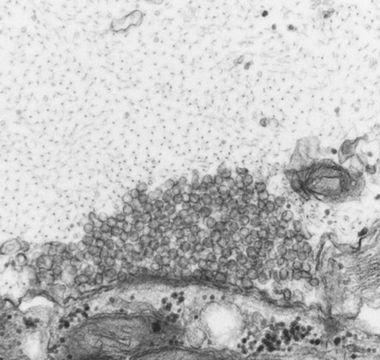My PD Story

Cristina Roman-Vendrell, PhD
2022 Postdoctoral Fellowship
Utilizing Lampreys to Explore New Drug Target for Parkinson’s
Cristina Roman-Vendrell, PhD, from the Marine Biological Laboratory is utilizing an invasive species from the Great Lakes to further Parkinson’s disease (PD) research. She received a Parkinson’s Foundation Postdoctoral Fellowship for Basic Scientists to conduct a study using the sea lamprey (a jawless vertebrate fish) that will work to discover how buildup of the protein alpha-synuclein affects synapses — the contacts between brain cells. The findings could lead to new targets for Parkinson’s medications.
“This research will provide insights into the earliest features of PD,” Dr. Roman-Vendrell said. “It has the potential for identifying treatments that can improve synaptic function. This will help in the development of therapies to slow or halt PD progression.”
Parkinson’s is characterized by the misfolding of a protein called alpha-synuclein, which causes the protein to form deposits (or “build-up”) in the brain. In addition to limiting the brain’s ability to produce dopamine, this abnormal build-up of alpha-synuclein at synapses is linked to thinking changes and dementia in PD. This build-up appears to occur early in the disease — before other signs of nerve cell degeneration.
About Alpha-Synuclein: When it comes to Parkinson’s disease, the protein called alpha-synuclein plays a key role. This protein begins to form sticky clumps in neurons (cells in the brain) in people with PD. Over time, the clumping kills healthy neurons and impairs the brain’s ability to produce dopamine, leading to Parkinson’s symptoms and ultimately a diagnosis.
This makes synapses an excellent target for treatment. However, not much is known about how alpha synuclein builds up at synapses. This slows down research and the ability for scientists to develop new treatment strategies.

Dr. Roman-Vendrell will inject PD-derived alpha-synuclein into the synapses of lampreys to see how it leads to synaptic dysfunction. Lampreys have large, visible neurons, making them used a lot in neuroscience research. Due to their large reticulospinal neurons, researchers can microinject antibodies and proteins to disrupt specific molecular targets at synapses. “We can then use high-resolution imaging [see image] for detailed analyses of synaptic structure and function,” Dr. Roman-Vendrell said.
For more than 10 years, the Marine Biological Laboratory has been levering the unique features of the sea lamprey's giant synapses and implementing them as a model for studying how alpha-synuclein impacts synapse structure and function. “To our knowledge, our lab is the first to utilize the lamprey synapse model to investigate impacts of PD on synapses,” said Dr. Roman-Vendrell.
“Our lampreys come from the Great Lakes, where they are an invasive species,” she said. “Scientists use them as models for neuroscience and developmental biology, as well as evolutionary biology and ecology.”
Dr. Roman-Vendrell will also investigate whether selected alpha-synuclein inhibitors can improve synapse function in PD. Of her Parkinson’s Foundation grant award, she said, “Many years ago, a dear family friend was diagnosed with Parkinson’s disease. It was heartbreaking to see her deteriorate and unable to do even basic things on her own. As a scientist, I was motivated to pursue neuroscience research that may help us find treatments for this terrible disease. It is a great honor to receive this award and to know that people with PD may benefit from the outcomes of my research.”
Meet more Parkinson’s researchers! Explore our My PD Stories featuring PD researchers.
Related Materials
More Stories
from the Parkinson's community


